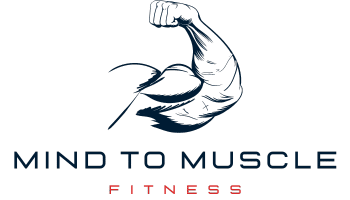
Unlock Gains with Linear Progression Mastery
Did you know that linear progression isn’t just about lifting more weight? It’s actually a step-by-step increase that boosts strength and transforms your workout. Big names like Microsoft and Google have explored Linear Progression Mastery to boost skill and fitness.
If you’re starting out or want to break through limits, mastering linear progression is key. It offers a clear and strong route to top performance. This method is all about gradual increase, the main rule for building muscles and getting stronger. As you move from start to peak, each phase gets you ready for more challenge.
Yet, even the best fitness progression setups have issues. Things like diminishing returns and balance problems can happen. This is where mastering linear progression comes in. It offers a proven plan to avoid these issues and achieve real progress.
Key Takeaways
- Understand the systematic approach of linear progression to foster steady strength gains.
- Learn how linear progression mastery provides a structured and effective path for fitness and skill improvement.
- Recognize the challenges within traditional progression systems and how mastery can address them.
- Explore how linear progression impacts muscle growth and contributes to successful workout transformation.
- Gain insights into effective planning and execution of training programs that incorporate progressive overload.
The Power of Linear Progression in Building Strength
Linear progression is more than just gym lingo. It’s a proven method that enhances your strength progression, fitness progression, and overall training progression. By gradually increasing your weights, you apply progressive overload. This stimulates continuous muscle growth and increases power. Let’s look into linear progression and how to use it well.
Defining Linear Progression
Linear progression means gradually increasing your training intensity. It starts with many reps and lighter weights and moves to heavier weights and fewer reps. This approach spans over several months, divided into smaller cycles for adjustments. It’s a safe way to build strength over time.
Benefits of a Structured Training Approach
Linear progression is known for its many benefits. It helps you avoid overtraining and plateaus. Studies show it can boost leg press strength by up to 30%. By varying training phases, it improves different aspects of fitness. This makes for a well-rounded advancement in fitness.
Key Principles for Successful Linear Progression
To succeed with linear progression, remember these principles: plan rest times, gradually increase intensity, and be flexible with your plans. These strategies prevent your training from becoming static. And they ensure every workout aids your overall progress. Mix in different periodization styles for the best results. Keeping these in balance is key for continuous improvement.
There’s strong evidence that linear progression works for building strength. Researchers like Prestes, Miranda, and Fleck and Kraemer have shown its effectiveness. Whether it’s reverse or undulating periodization, the outcomes are clear. Knowing this, you can move confidently towards your fitness ambitions. Embrace these strategies, apply them, and watch your strength soar.

Linear Progression Model Explained
When talking about the linear progression model, imagine a powerhouse building method. It’s like creating a skyscraper of strength, where every level is a new training phase. Each phase is crucial, designed to push you towards peak performance.
In weight training, linear periodization is key. It means gradually increasing weights to boost strength steadily. Picture adding one brick at a time to your foundation. This makes your strength solid and unbreakable.
Newcomers to strength training often see big gains with linear progression. Let’s look at how these phases stack over time for clearer understanding.
| Phase | Goal | Time Frame | Focus |
|---|---|---|---|
| 1. Preparation | Build a base | 4-6 Weeks | Establish form and consistency |
| 2. Hypertrophy | Muscle Growth | 6-8 Weeks | Increase muscle mass |
| 3. Strength | Max Strength | 8-12 Weeks | Convert muscle to strength |
| 4. Peaking | Peak Performance | 1-2 Weeks | Optimize training for competition |
These steps bring sure results for fitness enthusiasts. Linear progression isn’t just for reading. It applies to mental and muscle growth. Whether it’s pushing through a book club or a workout, growth is the goal.
Tracking Progression: Essential Tools and Techniques
In our fitness journey, tracking progress is key. It acts like our guide, showing if we’re on track or not. So, how do we make the most of linear progression tracking? How do we make sure our hard work shows in real, trackable gains?
Importance of Progression Tracking in Fitness
Having a tool to track your fitness is like having a no-nonsense coach. It’s not just about jotting down notes. It’s analyzing data to see patterns or plateaus. And fitness apps are here to change the game. They highlight our small victories and give us feedback to fine-tune our efforts. Boostcamp, with its cool dashboards and deep insights, shines here. It’s not just about gathering data; it’s about understanding our progress story from the beginning to our current strength.
Technology & Apps to Monitor Your Training Progression
If you love tech that makes life easier, you’ll love workout monitoring apps. Apps like Boostcamp offer seamless and powerful support. They turn our performance into easy-to-understand graphs and numbers. It’s like they translate our muscle work into progress we can see. How convenient, right?
Now, let’s look at numbers that show more than what happens in the gym:
| Statistic | Insight |
|---|---|
| 89% lack of documented UX career ladder | Signals need for personalized tracking systems |
| 18% advancement outside managerial roles | Illustrates alternate progression paths |
| 7 UX cognitive-mapping sessions | Demonstrates the value of deep, analytical tracking |
| 465 UX practitioners surveyed | Highlights the diversity of progression metrics |
These facts show that tracking isn’t just for weights when it comes to fitness. It’s about understanding how we grow as people. Now is the time to use apps like Boostcamp to your advantage. We need to take charge of our growth story now. In the end, shouldn’t we be in charge of our strengths?

Milestones in Strength Progression: When to Advance
I’m your guide in the strength training world, ready to help you see when you’ve hit big progression results. Knowing when to aim higher in your training milestones matters a lot. It keeps you motivated and moving forward in your lifting journey. Let’s explore the benchmarks you should hit and how to know it’s time to level up in training.
The idea of adding more weight, known as the linear progression method, isn’t just for newbies. Even the pros lean on this systematic way to boost their strength. You might start your lifts at about 70% of your max for one rep (1RM). Then, push through many sets until you can’t do more. After, drop the weight slightly and try to do more reps than before.
Progress
Intermediate lifters should aim for 15 to 40 working reps each week, mixing strength and size building techniques. Moving up in lifting involves mastering harder versions of exercises. This shows both strength and skill. For instance, an experienced lifter might move from front squats to high-bar, then to low-bar squats. They might even use lifting belts to keep getting stronger.
- Use rep max calculators to check if you’re getting stronger than your current 1RM.
- Look up to legends like Ed Coan or Fred Hatfield, who perfect linear progression for contests.
- Follow these time frames: 2-3 months for those in the middle stage and 3-4 for the advanced before a 1RM test.
- Even getting 5% better over a few months is a big deal in lifting.
- When a contest is coming, aim for goals like 103% of your current max. Then, plan your training backwards from there.
Friends, sticking with linear periodization might seem old-school, but it works. It’s those small wins, consistently gained, that lead to big progress. Trust me, reaching new progression results and training milestones will take your lifting from basic to extraordinary. By staying committed and gradually increasing intensity, you’re building a foundation that lasts. While trends like the Bulgarian method for strength training offer rapid gains for advanced lifters, they might not provide the same sustainable progression for everyone. Stick to what works for you, and over time, you’ll see those small, consistent efforts transform into monumental achievements.
Overcoming Plateaus with Advanced Linear Periodization Tactics
Everyone who lifts seriously will hit a training plateau sooner or later. This is when it’s time for serious training adjustments. By using advanced linear periodization and progressive overload wisely, you can overcome these plateaus. Let me help you find your way back to making consistent strength gains.
Adjusting Training Variables for Continuous Gains
If your regular routine isn’t giving you the results it used to, it’s time for a change. Trying new workouts or exploring different rep ranges can spark muscle growth and strength again. According to research by Storniolo et al. (2021), keeping an eye on things like heart rate variability is important. This info helps you make smart changes to your training.
The Role of Deload Weeks in Long-Term Progress
Sometimes, your body needs a break, suggesting the need for deload phases. A deload week shows you’re listening to your body and easing off while staying active. This not only helps your muscles recover but they’ll come back stronger. They’ll be better prepared for the challenges of progressive overload, as shown by Niemeyer et al. (2020).
| Study | Focus | Key Findings |
|---|---|---|
| Storniolo et al. (2021) | Heart rate variability post-exercise | Assesses plateau phase after max sprint exercise |
| Niemeyer et al. (2020) | Oxygen uptake kinetics | Looks into muscle fiber activation and oxygen uptake plateaus |
| Hebisz et al. (2018) | VO2max plateau in cyclists | Studies the time of VO2max plateau post-exercise |
| Ou et al. (2017) | CO2 rebreathing during exercise | Evaluates noninvasive ventilation assistance |
| Finn et al. (2014) | Muscle activation post-fatigue | Discovers no increase in muscle activation after fatigue plateau reached |
Evidence-Based Case Studies: Linear Progression Success Stories
In the world of fitness, the linear progression program is more than a concept. It’s a method with solid proof from many strength training case studies. We’ve got lots of data showing how powerlifting success comes from this approach. This includes the importance of gradually increasing your workout intensity. Plus, the benefits of changing up your workout routine. People into fitness have gained a lot from this knowledge.
A study in 1982’s Res Q looked into different workout plans. They found that mixing it up can make you stronger. A 2001 research piece in Med Sci Sports Exerc showed resistance training can increase a key muscle growth factor. And another study in 1985 from Acta Physiol Scand saw changes in muscle types after strength training.
A 2009 study in J Strength Cond Res compared workout plans for college football players. The findings supported the linear model. And in 2004, the same journal found that resistance training helped postmenopausal women get stronger and improve their body shape.
- In 1986, the Journal of Athletic Training showed strong results from two workouts on strengthening the knee.
- J Strength Cond Res in 2009 proved linear plans often outperform reverse plans for max strength.
- Another study in 2002 from the same journal found differences in strength with linear and varied plans.
Why is this information impressive? The consistency across different groups – from older women to young athletes – shows the power of the linear progression program. These studies don’t just suggest a good outcome; they show a clear path. A path where well-planned, proven workouts lead to real and big improvements.
Breaking Down the Linear Progression Program
I’m a mentor passionate about muscle building and I know how vital a good linear progression guide is. Creating a lasting training plan is key for top fitness. We’ll look into making a program, spot mistakes to dodge, and focus on strength development nutrition.
A Step-by-Step Guide to Creating Your Plan
To start building a linear progression program, first set a strong base. This base sets your starting intensity and volume. It’s crucial to slowly tweak your training aspects for steady growth and to get stronger. Here’s a basic plan outline:
- Assess your current strength levels for an accurate starting point.
- Establish incremental goals to maintain motivation and direction.
- Progressively increase weights, ensuring each phase builds upon the last.
Common Mistakes to Avoid in Linear Progression Planning
Mistakes can throw off the hardest workers. Key errors include not following proper load increases and skipping rest times. Let’s look into these issues and learn from real-life examples:
| Training Error | Outcome | Preventive Measure |
|---|---|---|
| Improper Load Progression | Increased injury risk, plateauing | Adhere to a 5-10% increase in weights |
| Neglecting Recovery | Decreased performance, overtraining symptoms | Integrate regular deload weeks |
| Uniform Training Approach | Suboptimal strength development | Employ segmented regression analysis to tailor training intensities |
Incorporating Nutrition for Optimal Strength Development
The role of strength development nutrition cannot be overstated. Eating right is as critical as your workout routine. A diet with enough protein, carbs for energy, and fats for hormones is vital. Here’s how you can manage your eating plan:
- Consume a protein-rich diet to support muscle repair and growth.
- Balance your carbs consumption according to training days for energy sustenance.
- Don’t overlook healthy fats, which play a key role in hormonal health.
Always remember, your gains depend on both your training and your diet.
Conclusion
As we wrap up our journey on linear progression, it’s clear that mastering it is crucial for success in strength training. Understanding linear regression helps predict progress, showing the importance of data like BMI and MUAC. It’s not just about numbers, but a science that can change how we train. With a firm grip on linear progression’s basics, I’ve seen big changes in my own training.
But mastering workouts is about more than just stats. It requires a balance of tracking your training, smart recovery, and right food choices. These elements work together to boost growth and set personal records. Paying attention to details like linear relationships and making sure observations are independent is key. It’s about building a training plan on solid, scientific ground.
My advice for newcomers is straightforward: use the data but don’t be limited by it. Applying statistics helps guide a well-planned journey. I’ve learned to accept changes while sticking to a structured plan based on statistics. This approach has helped me surpass my goals. It leads to lasting, scientifically-supported improvement in strength training.



